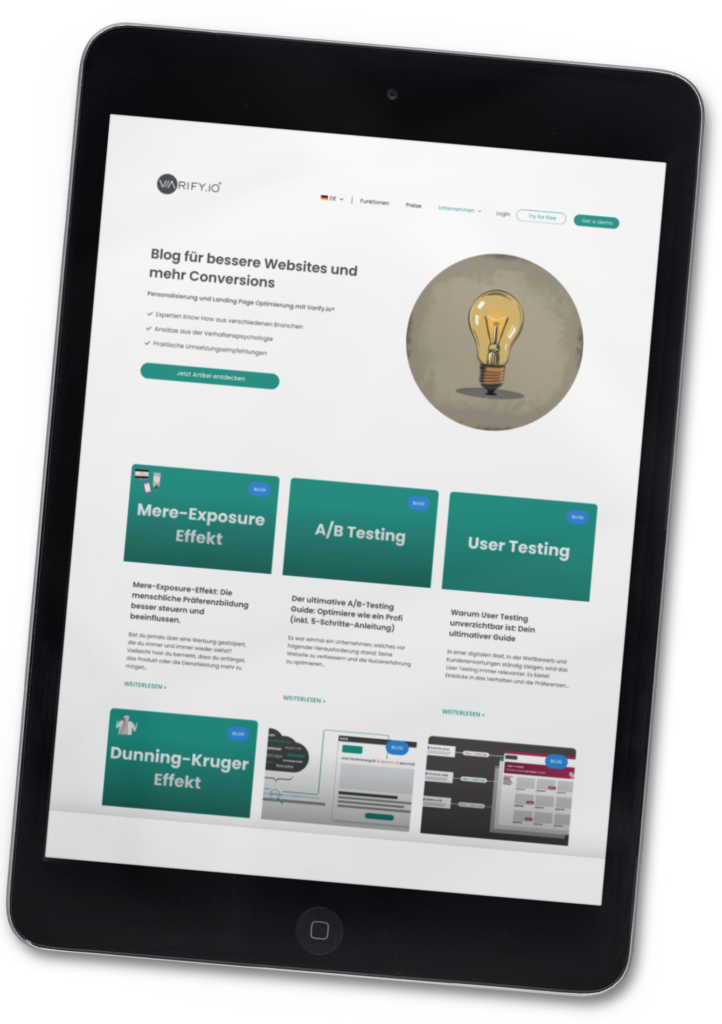In a world where customer expectations are constantly rising, the customer experience is a decisive competitive advantage.
Steve Jobs emphasized that companies should start with the customer experience and then work their way towards technology.
With this in mind, the customer journey map is not just a diagram, but a strategic tool.
It visualizes the entire customer experience from the first interaction to brand loyalty.

Table of contents
What is a customer journey map?
A customer journey map is a visual representation of a customer's interactions and experiences with a brand or company. It tracks the path a customer takes, from their first awareness or knowledge of a brand to their final interaction, be it a purchase, a service, or even a sign-off. It highlights not only touchpoints and moments of truth, but also potential feelings of the customer, such as frustration or satisfaction, and the company's desired actions at those specific points.
Essentially, the map tells the story of the customer experience, based on real data, feedback and research. It can focus on an online experience, such as a website, a physical experience in a store, or a combination of both. By clearly understanding this journey, companies can identify weaknesses, better understand the customer, and ultimately deliver a coherent and satisfying customer experience.
The process: creating a customer journey map
1. objective
Before you start creating a customer journey map, you should have a clear understanding of the goals you want to achieve. A clear objective helps to keep focus and ensure that the map provides the desired added value.
Stakeholder participation and cross-functional teams:
Involving different departments and stakeholders involved at different points in the customer experience provides a holistic view. This promotes a collaborative approach and ensures that all relevant aspects are considered.
2. persona research
Collect qualitative and quantitative data:
For an effective customer journey map, it is important to collect both qualitative and quantitative data about the target audience. This provides a deeper understanding of customers' needs, wants, and pain points.
Methods: Interviews, surveys, analysis of customer feedback:
There are several methods to collect data for persona research. Interviews provide direct feedback, surveys reach a larger group, and analyzing customer feedback can provide valuable insights.
3. define touchpoints
How and where customers interact with the brand:
Touchpoints are the various places where customers come into contact with the brand. This can be anything from the website to customer service. It's important to identify all of these points to get a complete picture of the customer experience.
4. map the current state
Understanding the current customer experience:
Here, the current customer experience is visualized, based on the data collected. This provides insights into existing strengths and weaknesses and serves as a basis for improvement.
5. map future condition
Identify gaps and opportunities for optimization:
After mapping the current state, one can begin to plan for the ideal future state. This includes identifying gaps in the current experience and identifying ways to close those gaps to optimize the customer experience.
Advantages of the Customer Journey Map
Using customer journey maps offers a variety of benefits to businesses. Here are some of the most important:
Business benefits: Increase in sales, product development
With a deep understanding of customer needs and preferences, companies can develop targeted strategies to increase sales. Likewise, the feedback gained through the journey map can directly inform product development to better address customer needs.
Increase customer satisfaction and loyalty
By identifying and addressing the pain points and hurdles in the customer experience, companies can significantly increase customer satisfaction. A positive customer experience often leads to stronger customer retention and loyalty.
Better understanding of customer behavior and preferences
By mapping the customer journey, companies gain valuable insights into the behavior of their customers. This enables companies to better tailor their offerings to the specific preferences and needs of their target group.
More efficient marketing and advertising strategies
With a clear understanding of the customer journey, marketing teams can design their strategies more effectively. They can create more targeted messages and position them at the right touchpoints for maximum impact.
Proactive problem identification and resolution
A customer journey map can serve as an early warning system that uncovers potential problems before they escalate. Companies can thus take proactive measures to overcome these challenges and minimize negative customer experiences.
Practical applications and tools

Customer journey maps are not only relevant for certain industries or company sizes. They can be used in a wide range of sectors and business areas to improve the customer experience and optimize business strategies.
Examples for different industries:
- E-commerce: Online retailers can use journey maps to understand their customers' buying process, from initial product discovery to post-purchase support. The goal is to make the shopping experience as smooth and enjoyable as possible.
- Gastronomy: Restaurants and cafes can map their customers' journey from the initial online look-up or word-of-mouth to the actual restaurant visit and beyond.
- Software & Technology: Software companies, especially SaaS (Software as a Service), can map the onboarding experience, product feature usage, and support process to increase user satisfaction and build customer loyalty.
- Healthcare: Hospitals and clinics could map the patient journey from initial request through follow-up care to maximize patient convenience and improve quality of care.
How tools like Lucidchart can make the process easier:
Lucidchart and similar tools provide companies with a platform to visually represent their customer journey maps. These tools facilitate collaboration as teams can work together on the maps and make changes in real time. Some benefits of tools like Lucidchart are:
- Visual representation: Enables complex customer journeys to be presented in a way that is easy to understand.
- Real-time collaboration: Teams can work simultaneously on the map, which speeds up the process and increases efficiency.
- Customizable templates: There are specific templates for different industries and business areas to get you started.
- Integration with other business tools: Lucidchart and similar platforms often offer integrations with CRM systems, project management tools, and other platforms, making it easier to share data and implement journey map insights.
With the right tools and a clear understanding of the process, any company can reap the benefits of customer journey mapping and develop a more customer-centric business strategy.
Conversion rate optimization
Optimization is not just a task, but an ongoing obligation. One tool that should not be missing from any CRO toolkit is A/B testing. It allows us to test two variants of a page against each other to find the more effective one.
But it's not just about testing. The user interface (UI) and user experience (UX) play an immense role. A clean, intuitive design combined with a seamless user experience can tip the scales. However, we must never lose sight of the content. It should be constantly revised and brought to the point.
Pitfalls and challenges in customer journey mapping
Creating a customer journey map is a powerful tool to improve the customer experience. However, there are some challenges and mistakes that can occur during the process. Awareness of these potential pitfalls can help companies avoid them and realize the maps' full potential.
Common mistakes and how to avoid them
Insufficient data: A journey map should be based on real data and customer feedback. One mistake some companies make is to make assumptions about customer behavior instead of relying on real insights. It is therefore important to always use up-to-date and representative data.
Overloaded cards: While attention to detail is important, overly complex maps can be difficult for teams to understand. The key is to find a balance between detail and clarity.
Lack of Perspectives: If the map is created only from the perspective of a specific team or department, it may miss important aspects of the customer experience. It is essential to involve cross-functional teams in the creation process.
Statics: Once a map is created, it is not set in stone. Companies that do not continue to adjust or update their map after it is first created may be resting on outdated information.
Importance of continuous adaptation and updating:
Changing customer behavior: Customer preferences and behavior change over time, especially in fast-moving industries. A customer journey map should therefore be regularly reviewed and adapted to reflect such changes.
Corporate growth and change: As a company expands or introduces new products/services, customer interaction points and experiences may change. The map should reflect these developments.
Feedback loops: Continuously incorporating customer feedback into the journey map ensures that it remains relevant and up-to-date.
A successful customer journey map is a living document that evolves with the business and its customers. Considering pitfalls and adapting to changing conditions are therefore critical to its long-term usefulness.
Conclusion
Customer journey mapping is a powerful tool for optimizing the customer experience. It helps companies decipher the complexity of customer behavior, provides clear benefits such as increased revenue and improved product development, and enables value across industries through targeted application and tools.
But as with any tool, with the benefits come challenges. Constantly updating maps, avoiding typical mistakes, and considering continuous adaptation are essential for success.
For companies that plan to improve their customer experience, customer journey mapping offers not just a path, but a roadmap. Its transformative power lies in its ability to build real, lasting relationships with customers and put them at the center of every business decision.

